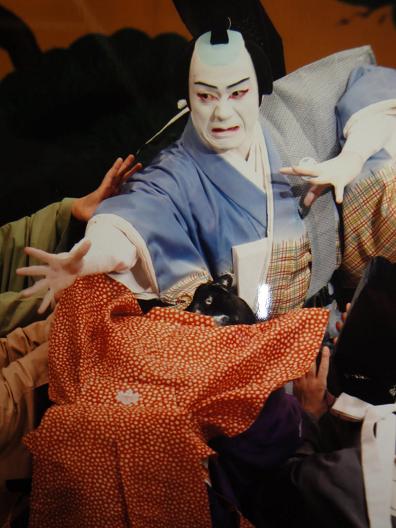|
|
|

|
a moment from the Kabuki version of the story
|
Chushingura
Probably the most most famous Kabuki play, and arguably Japan's favourite story, is Chushingura, The 47 Samurai.
The first version (a puppet play by Chikamatsu Monzaemon) was created in in 1706, only a few
years after the events (there were plays based on real events that would reach the stage in a
matter of weeks). A daimyo had been forced into suicide: his samurai separated and drifted
for a while, then one night came together to attack and kill the other lord who had been the cause.
The true reasons behind the orginating events are completely unknown: I think it's significant
that the actions are admired for a pure loyalty and commitment, regardless of right or wrong.
Indeed, what little historical evidence there is suggests that the final victim was a good guy,
and the lord who had committed suicide wasn't. Note that the story had to be set in medieval times,
to escape the ban on stories of Edo-period warriors and lords. The Kabuki version was written in
1748, by Takeda Izumo II, Miyoshi Shoraku and Namiki Senryu.
|
|

